Sorghum is a tropical grass that is native to Africa. It is a drought-tolerant crop that can be grown in dry areas with little rainfall. Sorghum is a staple food crop in Kenya. Sorghum farming in Kenya is an important part of the country’s economy, and the crop is grown on small farms nationwide. Sorghum is a hardy, drought-tolerant crop grown in Kenya for centuries. Sorghum is a very important crop for human consumption and livestock feed in Kenya.
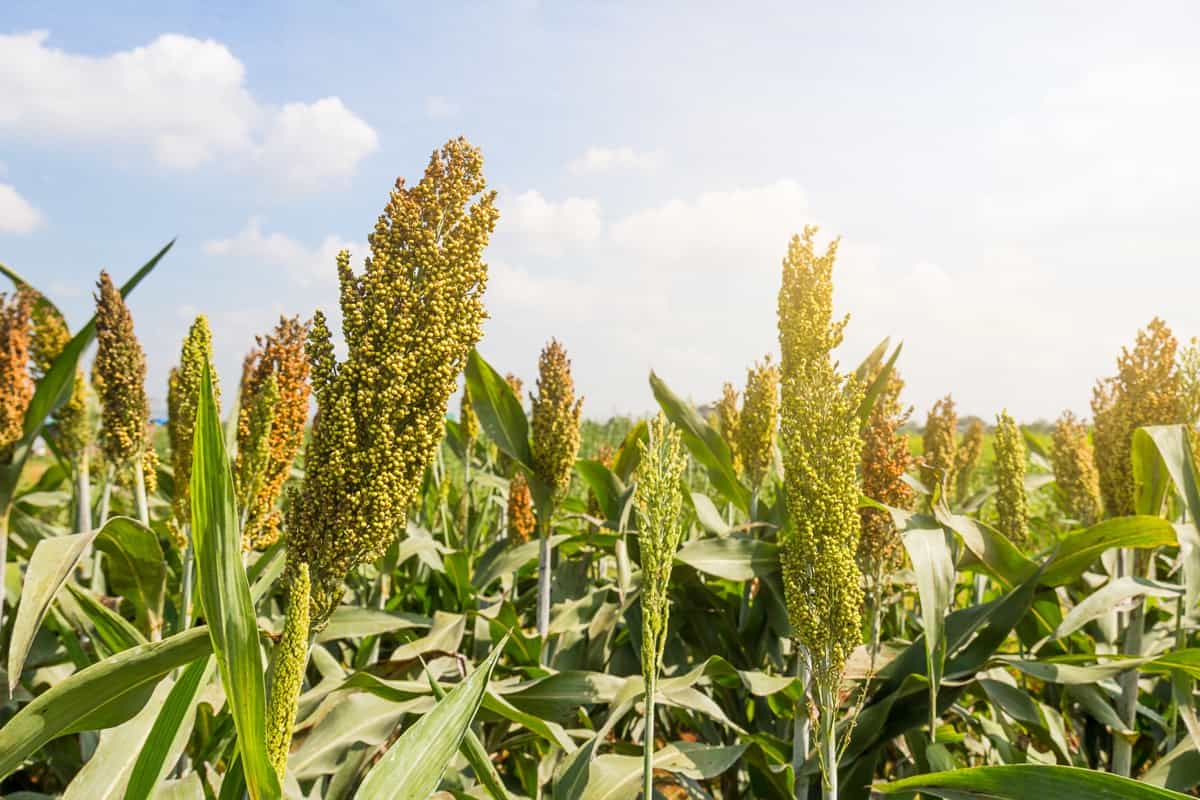
Sorghum Farming in Kenya
What is Sorghum Farming?
Sorghum crop is drought-resistant, low-maintenance, and highly demanding for human and animal consumption. The crop is easy to grow and is drought-tolerant, making it an ideal choice for farmers in dry regions. This versatile crop can be successfully grown in many parts of Kenya, providing a valuable food source for farmers and consumers. Sorghum is grown in the western, northern Rift Valley, eastern, and some parts of Central Province.
Sorghum farming in Kenya is typically done by small-scale farmers, who often grow the crop alongside other staples such as maize and millet. Sorghum is a relatively easy crop to grow and does not require many inputs in terms of fertilizers or pesticides.
Select the Appropriate Site for Sorghum Farming in Kenya
- The first step is to select the appropriate site for farming. The site should have well-drained soils with a pH of 6.5 to 7.5. The site should also have access to water for irrigation.
- Soil type is an important consideration when selecting a site for Sorghum production. Sorghum prefers well-drained soils with good fertility. Sandy loams or sandy clay loams are ideal. Waterlogged or highly acidic soils should be avoided.
- Water availability is another key factor when choosing a Sorghum production site. Sorghum requires moderate amounts of water and does not tolerate drought well. Irrigation may be necessary during dry periods.
In case you missed it: Best Fertilizer for Sorghum/Jowar: Organic, NPK, Bio-fertilizers, Requirements, When and How to Apply
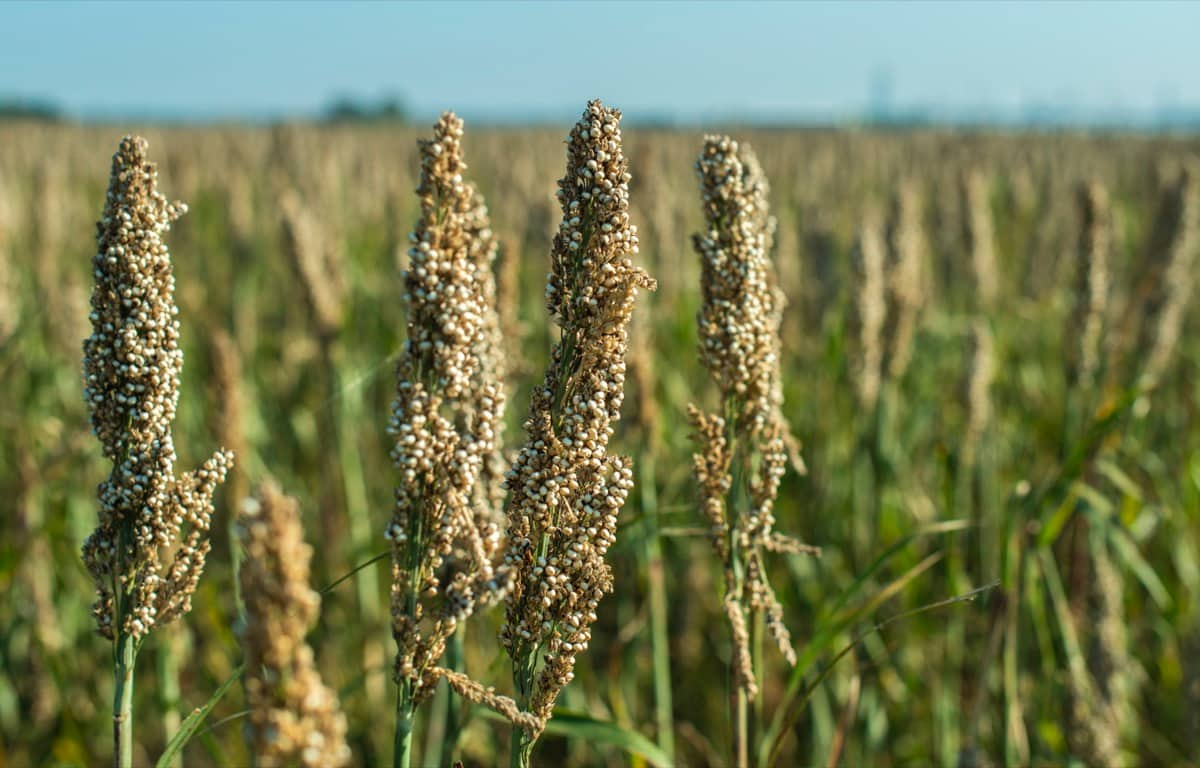
Prepare the Land for Sorghum Farming in Kenya
After selecting the site, the next step is to prepare the land. This includes clearing the land of any trees or shrubs and plowing and harrowing the soil to loosen it up. The land is prepared by plowing and harrowing to create a smooth, level surface. Seeds are then sown by hand or with a manual seeder.
The site should be well-drained and have ample sunlight. Once you’ve selected the perfect spot, it’s time to prepare the land. This involves clearing any debris, tilling the soil, and applying fertilizer. After the land is ready, you can finally plant your Sorghum seeds.
Fertilizing and Watering Requirement for Sorghum Farming in Kenya
- Sorghum plants must be fertilized regularly and given plenty of water, especially during the flowering and grain development stages.
- Sorghum is a highly adaptable and drought-tolerant crop that can be grown in various soil types and climatic conditions. The main constraint to Sorghum production in Kenya is the lack of quality seed. However, Sorghum can be profitable for small-scale farmers with the right inputs and management practices.
- To produce high yields, Sorghum requires sufficient nitrogen, phosphorus, and potassium. The ideal fertilizer ratio for Sorghum is 20:20:0 or 23:23:0. For every kilogram of fertilizer applied, the nitrogen, phosphorus, and potassium content should be equal. Applying 200-250 kg/hectare of fertilizer per season is recommended. For small-scale farmers who cannot afford commercial fertilizers, alternative options such as compost or manure can be used.
- When applying fertilizer, it is important to ensure that the nutrients are evenly distributed across the field. This can be done using a fertilizer spreader or by broadcasting the fertilizer by hand.
Seed Rate and Spacing for Sorghum Farming in Kenya
Regarding Sorghum farming in Kenya, seed rate and spacing are important factors. For this reason, it is recommended that farmers use a seed rate of 2.4-3.2 kg per acre and a spacing of 75 x 10 cm when growing Sorghum. Farmers can maximize their yield and produce a high-quality crop by doing so.
In case you missed it: Organic Sorghum Farming (Jowar), Production Process
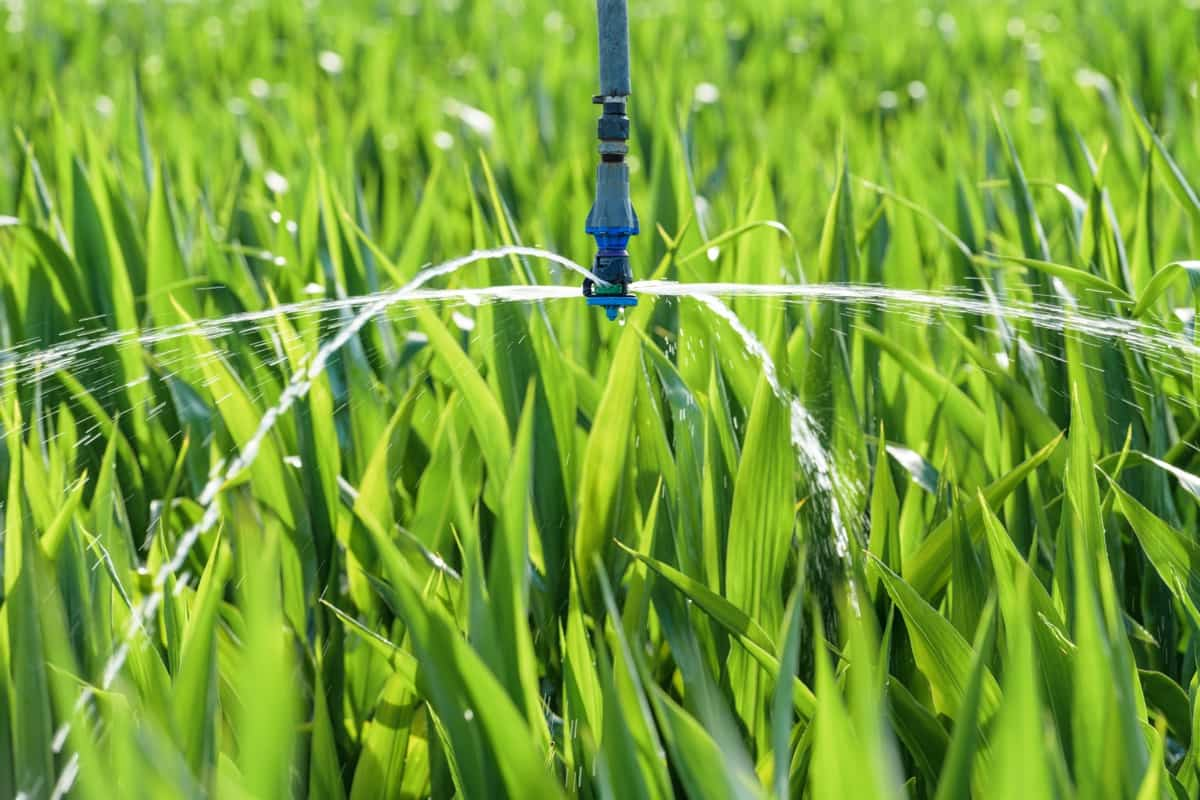
Crop Rotation and Weeding Management for Sorghum Farming in Kenya
Sorghum is a hardy, drought-tolerant crop that can be grown in many parts of Kenya. It is often a rotation crop, following maize or other cereals. Sorghum is a vigorous crop and responds well to weed control measures. However, the high cost of herbicides and the labor required for weeding make this an uneconomic option for many farmers. Weed regularly during the growing season to prevent resource competition between Sorghum plants and weeds. Hand-weeding is often necessary to remove all of the weeds effectively.
Thinning, Roguing, and Ratooning for Sorghum Farming in Kenya
Sorghum is a hardy crop that can withstand drought and poor soils, making it ideal for farming in Kenya. However, Sorghum requires some care and attention to produce a good yield. One of the most critical aspects of Sorghum production is thinning, roguing, and rationing. Thinning removes excess plants from a Sorghum field to allow the remaining plants to grow more evenly.
This is typically done when the plants are around 15-20 cm tall. Rogueing is the process of removing any diseased or damaged plants from the field. This helps to prevent the spread of disease and improve overall yield. Ratooning is the process of allowing new shoots to grow from the base of existing plants. This helps to increase yield as well as improve plant vigor.
Sorghum Production in Kenya
Sorghum farming in Kenya is done on a 197,403-ha piece of land. The climate in Kenya is tropical, and many farmers grow Sorghum as a food crop. Sorghum grows best in hot, dry conditions with full sun and well-drained soil. Sorghum is a hardy, drought-tolerant crop that can be grown in various soils and climates. It is a staple food crop in many parts of the world and is particularly important in Kenya, the third most important food crop after maize and wheat.
How to Identify Suitable Sorghum Seed Varieties
When it comes to Sorghum farming in Kenya, choosing the suitable seed variety is crucial for a successful harvest. Different factors to consider when selecting Sorghum seeds include climate, soil type, and intended use. For example, some Sorghum varieties are better suited for making animal feed, while others are more suitable for human consumption.
In case you missed it: Organic Proso Millet Farming: Cultivation Practices and Production Management
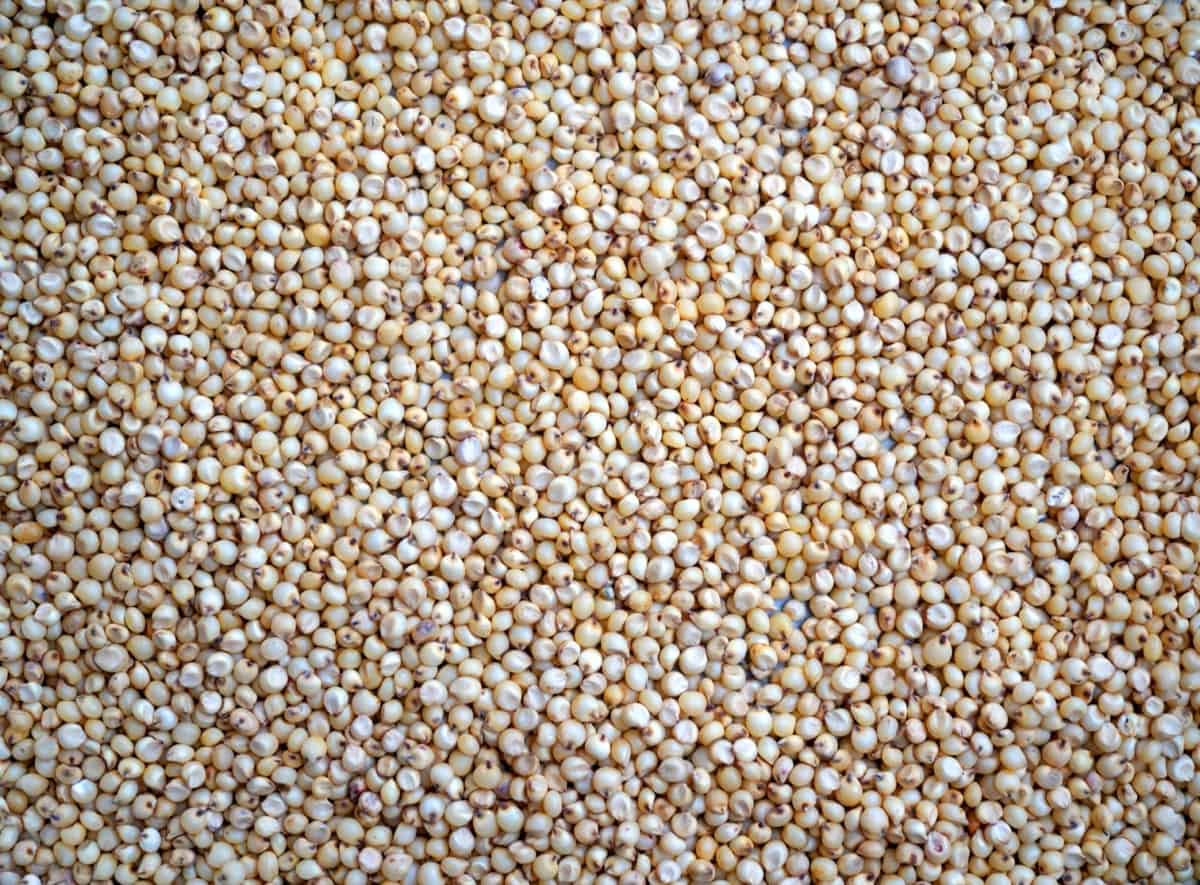
Before you purchase any seed, it’s essential to research and selects a variety well-suited to your area’s conditions. When deciding, consider climate, soil type, rainfall patterns, and day length. You can get information on Sorghum varieties from extension offices or agricultural research institutions.
Talk to other farmers in your area and find out what types of Sorghum they are growing successfully. They may be able to recommend a good variety for your specific conditions. You can also ask where they purchase their seed and whether they have had any problems with it. Make sure you purchase your seed from a reputable source of high-quality products. This will help ensure you get the best possible results from your crop.
Intercropping for Sorghum Farming in Kenya
Sorghum can be grown as a sole crop or intercropped with other crops such as pigeon peas, cowpeas, and green grams. Intercropping Sorghum with these leguminous crops has many benefits, including increased nitrogen fixation, improved soil fertility, and reduced pest and disease pressure.
How Can You Make More Profits in Sorghum Farming in Kenya?
To increase profits in Sorghum farming in Kenya, it is essential to understand the factors affecting Sorghum production and consider options for improving output. Sorghum is a rain-fed crop, so one of the most important factors influencing yield is the rainfall received during the season. Another key factor is the planting date – earlier planting can result in higher yields. Improving soil fertility is another way to potentially increase profits, as this can lead to higher yields.
There are several ways to improve soil fertility on a Sorghum farm. One option is to use fertilizer, which can be applied before planting or during the growing season. Using organic matter such as manure or compost can also improve soil fertility, with the added benefit of being environmentally friendly. Crop rotation can improve soil fertility by alternating Sorghum with other crops with different nutrient requirements.
The Challenges of Sorghum Farming in Kenya
One of the biggest challenges is drought. Sorghum is a relatively drought-tolerant crop, but extended periods of dry weather can still impact yields. Farmers also have to contend with pests and diseases, which can be challenging to control in Sorghum fields. Finally, the high cost of inputs such as seeds and fertilizer can make it difficult for small-scale farmers to profit from Sorghum production.
In case you missed it: Organic Little Millet Farming: Cultivation Practices and Production Management
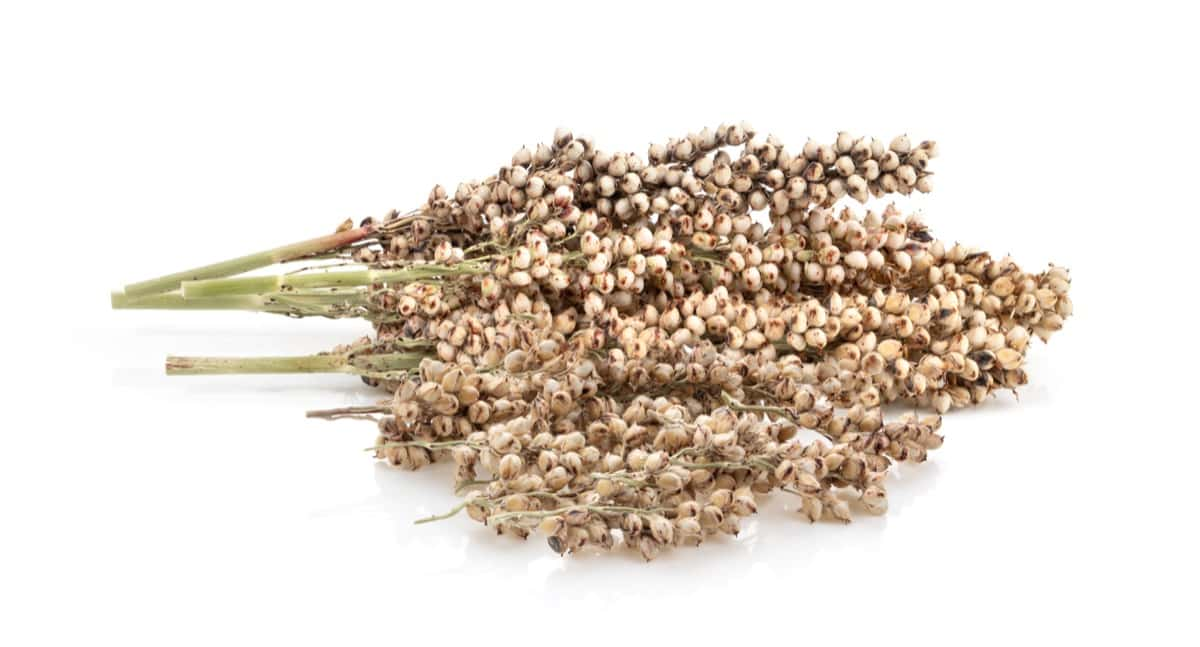
Pest Identification and Management for Sorghum Farming in Kenya
Sorghum is a highly versatile crop that can be grown in various environments. However, like all crops, it is susceptible to pests and diseases. Identifying these pests and diseases early is crucial for the success of any Sorghum farming operation. The most common Sorghum pests include stem borers, aphids, white grubs, and termites. Each of these pests can cause significant damage to the crop if left unchecked.
Stem borers are the most destructive pest of Sorghum. These larvae tunnel into the stem of the plant, causing it to weaken and eventually collapse. Aphids feed on the plant’s sap, which can stunt its growth or kill it if left unchecked. White grubs are another type of larva that feeds on plant roots, causing them to become weak and stunted.
Termites are also a severe problem for Sorghum farmers; these insects can quickly destroy entire fields if not controlled. Several diseases can affect Sorghum plants, including downy mildew, rust, and smut. These diseases can cause serious damage to the plant and, in some cases, can lead to death. It is important to control these diseases and take steps to prevent them from occurring.
Downy mildew disease is caused by a fungus that attacks the plant leaves. This disease can cause the leaves to turn yellow and eventually die. Rust is another type of fungal disease that affects Sorghum plants. This disease causes red or orange spots on the leaves of the plant. Smut is a fungus that attacks the kernels of the Sorghum plant. This disease causes the kernels to blacken and deform.
Sorghum Harvesting Tips
- When it comes to Sorghum harvesting in Kenya, timing is everything. The crop should be harvested when the grain is fully mature and dry, typically 3-4 months after planting.
- Make sure the field is completely dry before starting to harvest. If there is any moisture, the grain will spoil and mold.
- Use a combine harvester for large fields or a sickle for smaller areas.
- Thoroughly clean the equipment before use to avoid contamination of the grain.
- Store the Sorghum in a cool, dry place until ready for use or sale.
Sorghum Yield per Hectare in Kenya
Sorghum is a highly drought-tolerant crop that can be grown in arid and semi-arid areas with little to no irrigation. The average yield of Sorghum is 2.25 to 3.8 tons per hectare, depending on the variety.
How Much Does Sorghum Profit Per Acre in Kenya?
The average profit per acre for farmers who grow improved Sorghum varieties in Kenya is 98 dollars per acre. This is because they can sell their crop for more money due to the higher quality of the grain. On average, farmers who grow traditional Sorghum varieties only make 25 Kenyan shillings (0.25 U.S. dollars) per kilo to 0.30 dollars per kilo.
Sorghum Varieties Available in Kenya
Kenya has a wide variety of Sorghum varieties, each with its unique characteristics. The most common varieties in Kenya are Serena, Seredo, Gadam, E1291, Ikinyaruka, BJ28, and BM30. Serena is the most popular variety in Kenya and is known for its high-yield potential. Seredo is another high-yielding variety commonly grown in the western part of the country. Gadam is a drought-tolerant variety often grown in areas with limited water resources.
In case you missed it: Top 12 Steps to Boost Millet Yield: How to Increase Millets production, quality, and tips
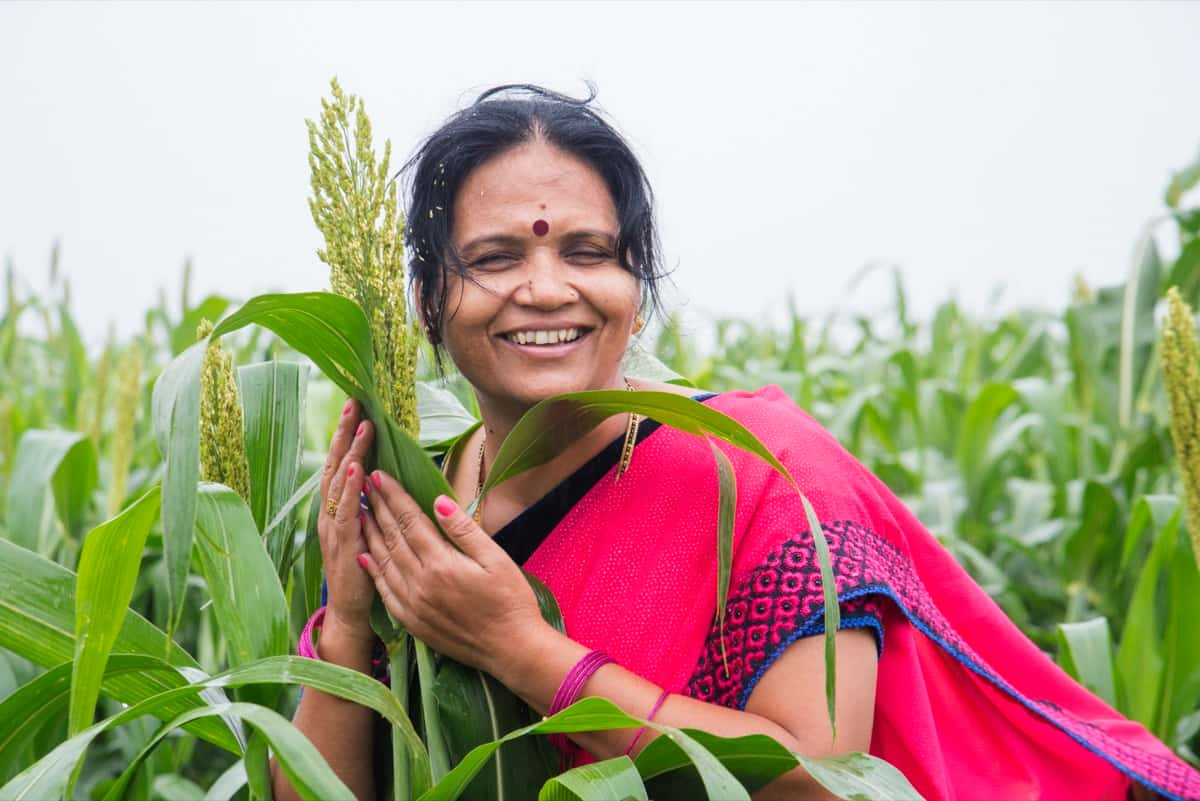
E1291 is a hybrid variety developed by the Kenya Agricultural Research Institute (KARI). It has higher yield potential than other varieties and is resistant to the major diseases that affect Sorghum in Kenya. Ikinyaruka is a locally adapted variety well suited to grow in northern Kenya’s hot and dry conditions.
Conclusion
Sorghum farming has the potential to be a very profitable enterprise in Kenya. With the right resources and knowledge, farmers can learn how to successfully grow their Sorghum crops and maximize their profits. In Kenya, Sorghum farming is an important part of the economy, with the crop being grown by small-scale farmers nationwide.
- Types of Pesticides Used in Agriculture: A Beginner’s Guide
- Economical Aquaculture: A Guide to Low-Budget Fish Farming
- 15 Common Planting Errors That Can Doom Your Fruit Trees
- How to Make Houseplants Bushy: Effective Tips and Ideas
- Innovative Strategies for Boosting Coconut Pollination and Yield
- Pollination Strategies for Maximum Pumpkin Yield
- The Complete Guide to Chicken Fattening: Strategies for Maximum Growth
- Natural Solutions for Tulip Problems: 100% Effective Remedies for Leaf and Bulb-Related Issues
- Revolutionizing Citrus Preservation: Towards a Healthier, Greener Future
- Natural Solutions for Peony Leaf and Flower Problems: 100% Effective Remedies
- Maximizing Profits with Avocado Contract Farming in India: A Comprehensive Guide
- Natural Solutions for Hydrangea Problems: 100% Effective Remedies for Leaf and Flowers
- The Ultimate Guide to Choosing the Perfect Foliage Friend: Bringing Life Indoors
- From Sunlight to Sustainability: 15 Ways to Use Solar Technology in Agriculture
- The Ultimate Guide to Dong Tao Chicken: Exploring from History to Raising
- The Eco-Friendly Makeover: How to Convert Your Unused Swimming Pool into a Fish Pond
- Mastering the Art of Delaware Chicken Farming: Essentials for Healthy Backyard Flocks
- 20 Best Homemade Fertilizers for Money Plant: DIY Recipes and Application Methods
- How to Craft a Comprehensive Free-Range Chicken Farming Business Plan
- Brighten Your Flock: Raising Easter Egger Chickens for Beauty and Bounty
- How to Optimize Your Poultry Egg Farm Business Plan with These Strategies
- Subsidy for Spirulina Cultivation: How Indian Government Schemes Encouraging Spirulina Farmers
- Ultimate Guide to Raising Dominique Chickens: Breeding, Feeding, Egg-Production, and Care
- Mastering the Art of Raising Jersey Giant Chickens: Care, Feeding, and More
- Ultimate Guide to Raising Legbar Chickens: Breeding, Farming Practices, Diet, Egg-Production
- How to Raise Welsummer Chickens: A Comprehensive Guide for Beginners
- How to Protect Indoor Plants in Winter: A Comprehensive Guide
- Ultimate Guide to Grow Bag Gardening: Tips, Tricks, and Planting Ideas for Urban Gardeners
- Guide to Lotus Cultivation: How to Propagate, Plant, Grow, Care, Cost, and Profit
- Agriculture Drone Subsidy Scheme: Government Kisan Subsidy, License, and How to Apply Online
- Ultimate Guide to Raising Araucana Chickens: Breed Profile, Farming Economics, Diet, and Care
- Bringing Hydroponics to Classroom: Importance, Benefits of Learning for School Students
- Ultimate Guide to Raising Polish Chickens: Breed Profile, Farming Economics, Diet, and Care
- Ultimate Guide to Raising Australorp Chickens: Profile, Farming Economics, Egg Production, Diet, and Care
- Silkie Chicken Farming: Raising Practices, Varieties, Egg Production, Diet, and Care
- Sussex Chicken Farming: Raising Practices, Varieties, Egg Production, Diet and Care